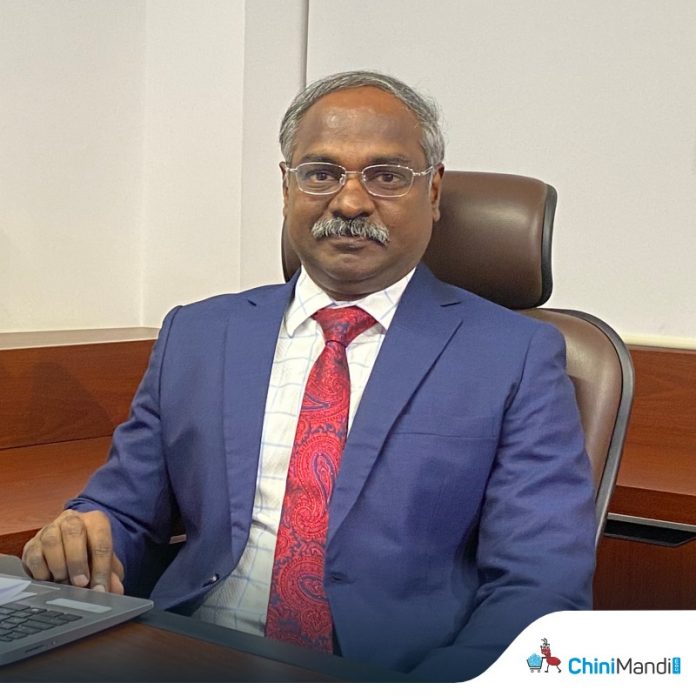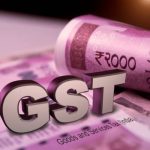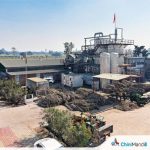Ample production and supply of sugarcane are important to maintain sufficient sugar availability in the country as well as to maintain the pace of energy transition towards green and clean fuel. In an exclusive interview with M Silvester, Whole Time Director, Kothari Sugars and Chemicals Ltd. and President, SISMA (TN), said that the production of sugarcane is not exactly proportional to the area under sugarcane cultivation due to several inhibiting factors. He said that modern technology including AI should be used in addition to the traditional methods for accurate estimation of sugarcane crop. He adds that the Government might consider sugar export of 2 million tons in the current season.
Q. What are the challenges facing the sugar industry?
Ans. In my view, shortage and unpredictable supply of sugarcane due to vagaries of monsoon, pest and disease, labour shortage in some parts of the country, lower net income of the farmers when compared to other crops in few States, etc are a major challenge faced by the industry today. In the absence of a linkage between sugar price and sugarcane price, the operating margins are very thin or even negative in some cases which impacts the sustainability of the industry.
The proactive policies of the Government have greatly supported the industry, however, sudden u-turn in certain policies like banning of B heavy molasses and Syrup diversion affect the industry severely. The Government announces FRP for sugarcane, but sugar mills in several States are forced to pay cane price over and above the FRP in the form of SAP. Also additional transport costs etc are hampering the level playing field.
Q. Given higher than expected sugar production. Do you think that the Government should allow sugar exports and additional sugar diversion towards ethanol production?
Ans. Based on the policy push by the Government for ethanol production, many companies have modified their sugar manufacturing process, integrating ethanol production from B Heavy molasses or syrup. Many of these companies do not have the flexibility of rolling back to C Heavy molasses route during the crushing season. Therefore, in my opinion, the Government should allow the diversion of B heavy molasses and Syrup for the production of ethanol. Further, considering the revised sugar production estimates, the Government may consider release of about 2 million tons of sugar for exports.
Q. Do you think that the Government should increase sugar MSP? What should be the quantum of increase which should offset higher cane FRP ensuring sufficient liquidity of the mills?
Ans. Yes. In my opinion, sugar MSP should be increased immediately. As per the recommendations of the Rangarajan Committee, the sugarcane price shall be 75% of the realisation from sugar. This recommendation has been made after elaborate analysis and considering the interest of all the stakeholders. Now that since the Government has already fixed FRP, the MSP may be calculated using the same formulae. For example, for the FRP of Rs.340/ qtl, the MSP shall be Rs. 44.22/ Kg.
Q. As we are nearing the crushing season. What is your outlook on sugar prices?
Ans. Sugar price is quite sluggish at the moment, I feel that if the Government permits about 2 million MT of sugar for export, it will boost the market sentiments.
Q. At the start of the season, there was a feeling that Maharashtra would produce less sugar due to less rain. However, sugar production is higher than expected. According to you, what should be done to improve the accuracy of sugar production estimates, which is vital for policy consistency?
Ans. The production of sugarcane is not exactly proportionate to the area under sugarcane cultivation. There are various factors such as drought, flood, pest & disease, plant/ratoon percentage, sugar recovery, diversion of cane to jaggery, etc influence the overall sugar production. Considering the complexity of the issue, we should use modern technology including Artificial Intelligence (AI) in addition to our traditional methods. Additional surveys may be planned wherever required to improve the data accuracy.
Q. The Government’s next big focus is towards the production of CBG, Green Hydrogen etc. Can you share your company’s plans in this space? What challenges do you foresee in terms of pricing and market?
Ans. The availability of adequate sugarcane is the major challenge for us now.
Q. How do you perceive the role of biofuels in the transition towards a low-carbon economy, and what barriers need to be addressed to accelerate their adoption?
Ans. The CO2 emission on the life cycle basis is the lowest in hybrid ethanol vehicles. Biofuels have the potential to achieve net zero or even negative CO2 emission, with further technological improvements in the automobiles. Therefore, I strongly feel that biofuels will play an important role in the transition towards a low carbon economy. Production of required quantity of biofuels without affecting food security will be a major challenge, especially for the most populous country like India. Therefore, it is very important to improve the yield of feedstocks like grain, sugarcane etc by adopting appropriate technologies and best practices. It is also very important to improve the overall water management at macro and micro levels to overcome the vagaries of monsoon and to bring more area under cultivation.













Heartfelt congratulations & best wishes to The President, SISMA TN Chapter for his visionary views shared during the interview with the India’s biggest and information portal for sugar and allied industry “chinimandi “.
The views as shared by the SISMA TN President during the interview has covered the entire complexities being faced by the sugar Industry sector for many years in succession and the effective steps / remedial measures to be taken by the government bodies to revive this Agro based industry on war footing basis without any further delay to make the Industry survive and to contribute to the rural economy and its stakeholders.
This message in this interview article should be taken and must reach many policy makers connected with the sugar Industry and benefit much in finding a long term solution for all the indian sugar industry stakeholders involving the Sugarcane growing farmers for their prosperity, Millers operational viability and in contributing to the Indian economy in a great way.
Congratulations to everyone at chinimandi too for your services to the sugar Industry.
Best wishes.